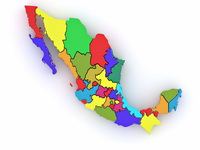H7 strikes again
Mexico is affected by what appears to be a major outbreak of H7N3 Highly Pathogenic Avian Influenza (HPAI), since the infection already seems to be widespread in a densely populated poultry area, mainly in layers. The information available indicates that veterinary authorities are implementing control measures, and due to the rapid spread of infection, these measures are behind the epidemic curve.
This has already occurred in the past. Previous outbreaks of H7 have also been devastating: the Italian 1999-2000 H7N1 epidemic with 413 outbreaks and 16 million birds culled, the Dutch 2003 H7N7 epidemic with 30 million birds culled and 241 outbreaks; and the Canadian 2004 outbreak, also caused by H7N3, which affected 53 farms with 17 million birds depopulated. These outbreaks were all characterized by similar features, including high density of poultry farms in the affected areas and extensive spread between holdings that were in close proximity. The control of the epidemics was obtained by massive de-population of millions of birds and vaccination was never applied in any of these outbreaks.
In these instances, massive culling has raised significant concerns internationally and criticisms from many points of view, including animal welfare issues, disruption of the marketing system and a severe damage to the poultry industry and related economies.
However, in the face of a rapidly spreading epidemic, the only other option to culling is to vaccinate. This has never been applied in the face of an H7 epidemic caused by a highly pathogenic virus, although several products have been tested experimentally with success.
The only field experience with vaccination against HPAI has occurred in trying to combat the highly pathogenic H5N1 virus. Approximately 8 years ago, between 2003-2004, many countries were simultaneously affected by H5N1 and some of them managed to identify the infection rapidly, and this allowed the implementation of stamping out policies - and within approximately 12 months most countries became free of infection.
In other areas, instead, there was delayed identification or widespread infection, vaccination programmes were implemented which were largely unsuccessful in eradicating the infection.
In retrospect, what appears quite clearly is that in under-resourced countries which have applied vaccination infection has not been eradicated.
The Asian situation with H5N1 is under some circumstances different from the Mexican situation. There are significant numbers of intensely reared waterfowl, there is very low biosecurity and there is constant contact with wild birds, to such an extent that in Asia H5N1 has also circulated and infected in wild birds populations.
Certain aspects are thus significantly different in Mexico; however, the decision to vaccinate should be a short-medium term strategy leading to eradication, as recommended by international organisations.
It is likely that if vaccination is not applied adequately and if the vaccination programme is not managed appropriately and with significant resources devoted to surveillance and to mapping infection within the vaccinated population, this will result in endemicity. Managing a vaccination campaign is a very complex endeavour which requires public –private partnership, collaboration and financial support which should be made available to Mexican authorities by international organisations and donors.
Should the eradication attempts fail, having H7N3 endemic in poultry producing countries, such as Mexico and H5N1 endemic in several countries in the Eastern hemisphere is a worrisome scenario for the poultry industry in the future.
On another issue, this could also have unpredictable repercussions on public health (remember H1N1 pandemic emerged from Mexico… and that there is a low pathogenic H5N2 circulating in certain areas), but this is another story.





